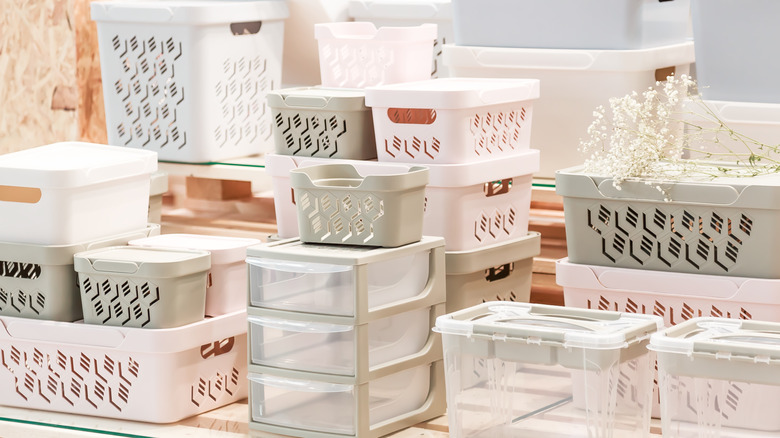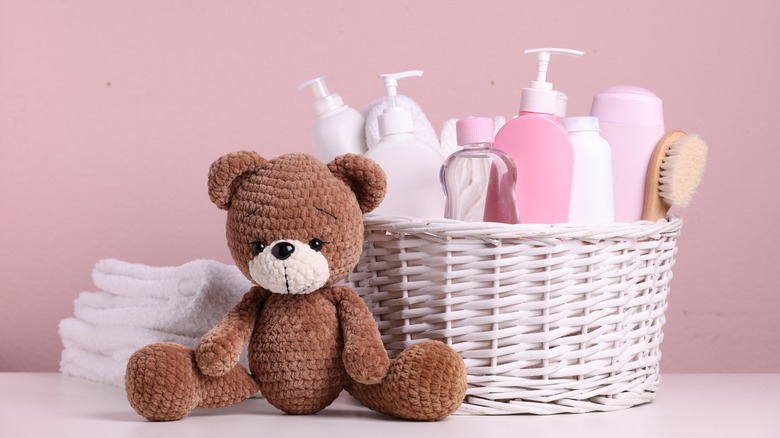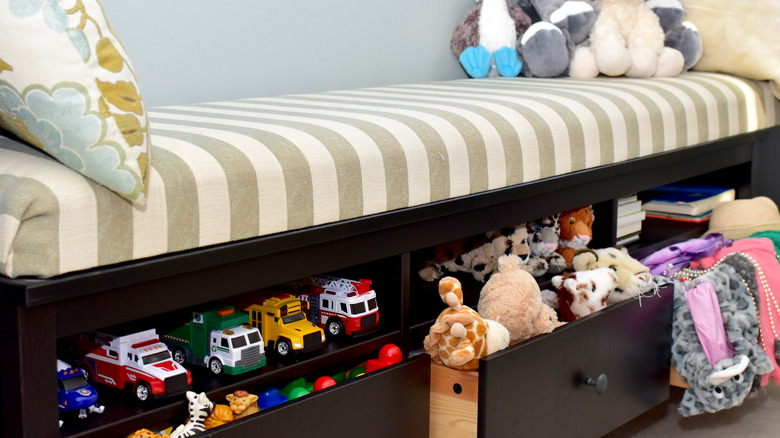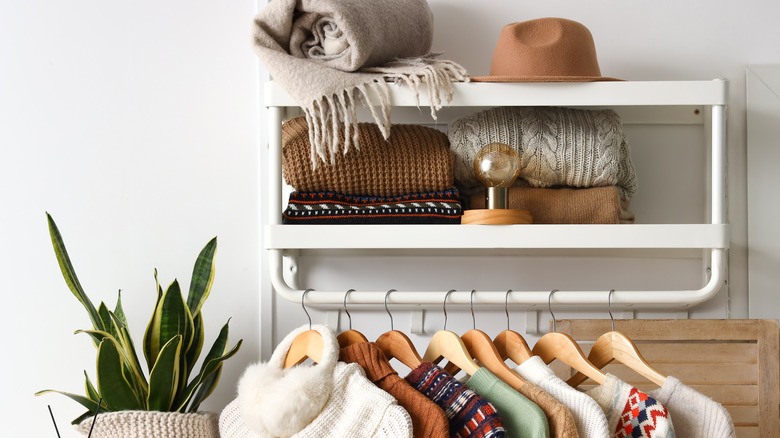Common Storage Mistakes And Easy Ways To Fix Them, According To An Expert
Is there ever enough storage in a home? When building a new house, some architectural designers recommend dedicating 10% of its square footage to storage. That means for a 2,000-square-foot home there should be at least 200 square feet of space to hide, organize, and tuck things out of view, as noted by Caroline Contractors, LLC. That's a baseline, of course, and it doesn't work for everyone. Like many Americans, you may struggle to find creative ways to maximize the limited storage space you have. Yet, sometimes it may just be that your organizational method is not working.
Perhaps it's not that you need more room (though in some homes you do), but rather, there's a better way to use that space in order to take full advantage of it. To provide more perspective, Scott O'Hara, the Vice President of Operations at ShelfGenie, a Neighborly company, offers some recommendations in an exclusive interview with House Digest. Here's what he says are some of the most common storage mistakes people make and the simple ways you can remedy them.
Too many bins and baskets
A trip to the department store can certainly get you excited to purchase dozens of bins in all different sizes and shapes to account for every individual item you own, from ties and socks to toys and magazines. O'Hara actually warns against this. "A common storage mistake people make is... purchasing too many items in an attempt to stay organized; sometimes the bins and baskets themselves become part of the problem. Why? The more organizers you have, the less usable space you have."
Those dozens of containers simply may not be beneficial, especially when you consider how much money you're investing in keeping each of those areas tidy. O'Hara shares a good way to balance this. "Take an inventory first of what you need to sort out. Then buy the containers, bins, and organizers that will help accomplish your organization and storage goals." That could mean you need to start with some decluttering and coordinating of what you have to understand what size, type, and number of storage bins you actually need. Refrain from buying too many, even those too-cute baskets you just have to have.
Not purging often enough or thinking it's a one-and-done process
Cleaning is the task of keeping surfaces free of dust and dirt. Decluttering is all about getting rid of what you don't need. That's very different. Though you may sincerely want to find a home for everything you own, O'Hara offers insight into minimizing the work. "Periodically re-evaluating the items in your home will help keep you from accumulating expired, unnecessary [items], or duplicates."
As we go through life, most of us pick up items we love and bring them home. Then there's all the mail that comes into your house, the new food items you're going to try, and the toys the kids leave around. Soon, it's not so much about having storage space as it is about getting rid of what you're not using. To make it easier on yourself, consider O'Hara's tip. "One way to declutter is by walking around rooms with a container and gathering the items you have to put away. Clear all surfaces of clutter, then sort and select what to put back, throw away, or donate."
Not organizing by what you use most and what you use periodically
So, you just managed to organize the walk-in closet in your home. Proud of it, you think everything is where it needs to be. That is until you have to pull out shoes from the back of the closet or a hot day warrants the need for the summertime clothing you've stored away. It's not just about digging those items out, but the mess that often comes with that process.
O'Hara offers a solution. "Keep necessities in the front and easily available. Every room in the home has the go-to items that should not be buried. Keep items used every day in a convenient basket you can pull out from a drawer or cabinet. Things like makeup, lotion, or moisturizer all make sense to place together." Work around each room of your home. What items do you use most frequently that should be kept within reach? In the living room, that could be the TV remote and a phone charger. In the kitchen, keep the cooking utensils you use most often closest to the stove. A basket that holds all the baby bathing essentials makes sense, while tucking away lesser used bathroom cleaning supplies does too.
Not seeking out multi-purpose home storage options
Another common mistake is believing you don't have storage when you may have far more than you think. It's all about using it properly. You may not need more storage as much as you need to recognize the key opportunities throughout your home already present. O'Hara shares, "A simple way to introduce more clever home storage solutions is by thinking through where you could use the extra storage the most. For instance, sofas and ottomans can serve as added storage space. There are also plenty of built-in storage furniture options like bookcases, shelves, dressers that include shoe organizers, tabletop space with end tables, and bottom shelves with room for smaller storage baskets."
Sometimes, we don't see the storage that's readily available because it's less accessible or even out of sight. "Don't overlook making use of the vertical space available," adds O'Hara. "This can include using storage space available above your eyes like upper cabinets, taller shelves, and even ceiling racks."
Not creating a seasonal storage system
Be honest with yourself for a moment. Do you have holiday décor that's still lurking throughout the summer because you don't have a clue where to put it? Do you have all the rain boots, tennis shoes, sandals, and snow boots stored in one closet, knowing that you'll only need one pair at a time most months of the year? O'Hara has a simple solution for tackling this problem. "From home décor to apparel, rather than dedicating year-round space to items you do not use at the moment, create an out-of-season storage solution. Free up closet space by making use of other storage areas around the home for [those] items."
If you already feel like you don't have enough room and wonder where you're going to find space to double up items, O'Hara encourages wise use of small spaces. "This could look like placing [those items] into sealed bins out in the garage, in the basement, crawlspace, attic, or even in the back of a closet. Consider storage trunks that can also serve as a place to store linens, pillows, and blankets."





